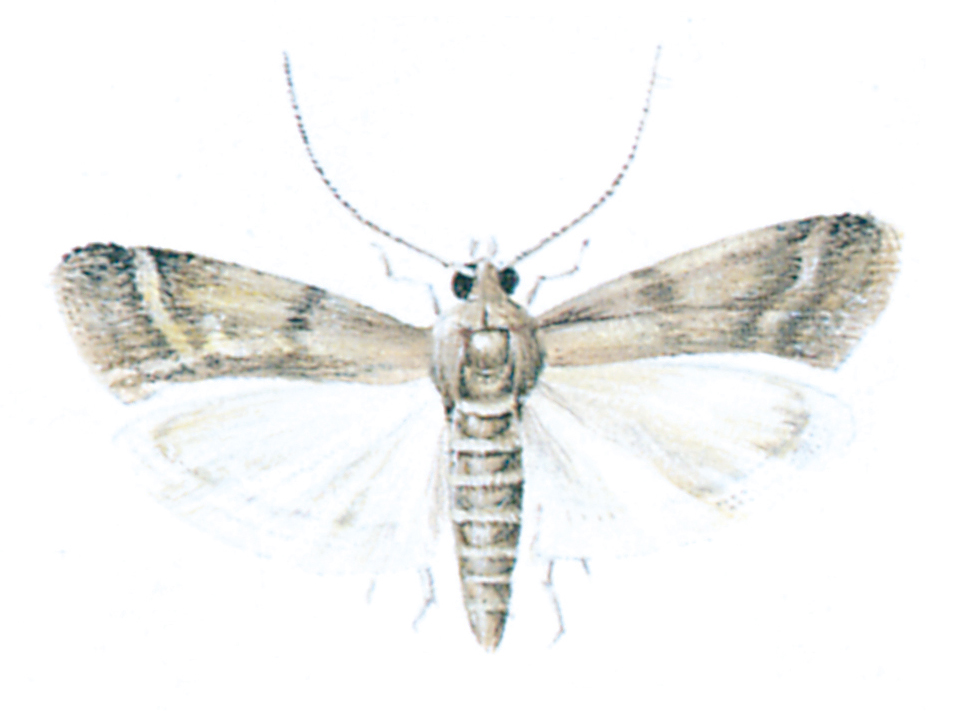( Latin: Ephestia elutella)

This species is closely related to the meal moth but its taste is more in the way of nuts, almonds, cocoa beans and dried fruit. It is therefore a serious problem in the chocolate industry. The moths nearly always reach a factory with the raw materials. In addition, the remains of cocoa beans and other materials may be seats of infection, and the machinery itself may harbour pockets of suitable food for these moths. If the moths appear in the factory there is always a risk that they may have laid eggs on the finished goods, and so one may have the problem of ‘worms’ in the chocolate. The infection may also, of course, take place in a store or shop.
The larvae cannot penetrate hermetically sealed packages, but if there is the slightest gap the female moth, attracted by scent, will lay eggs• nearby and the newly hatched larvae will crawl in and start to feed.
This moth can also eat tobacco. Remarkably enough it can tolerate nicotine and, together with the tobacco beetle, it is one of the most serious pests in the tobacco industry.
When a cocoa moth is seen in a private house or the larvae are observed climbing up a wall it will almost always be because a packet of raisins or nuts has been left open over a long period.




